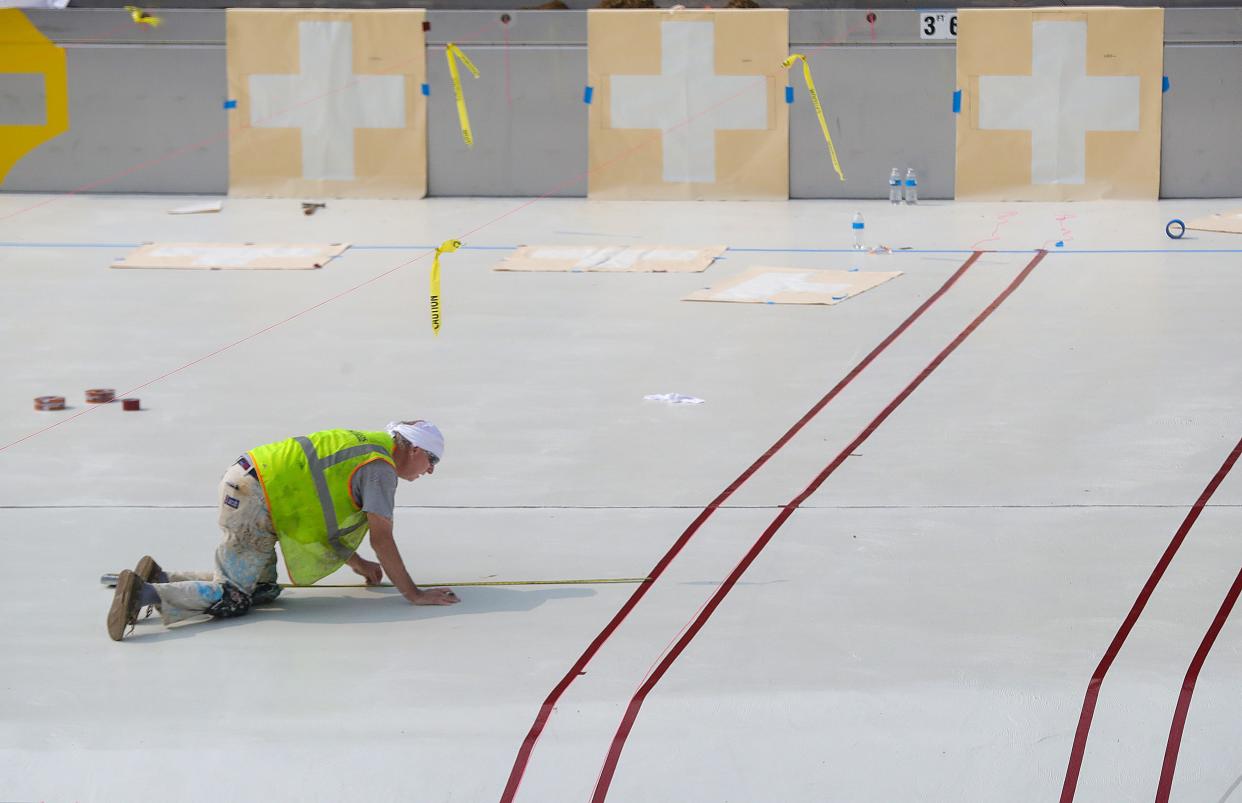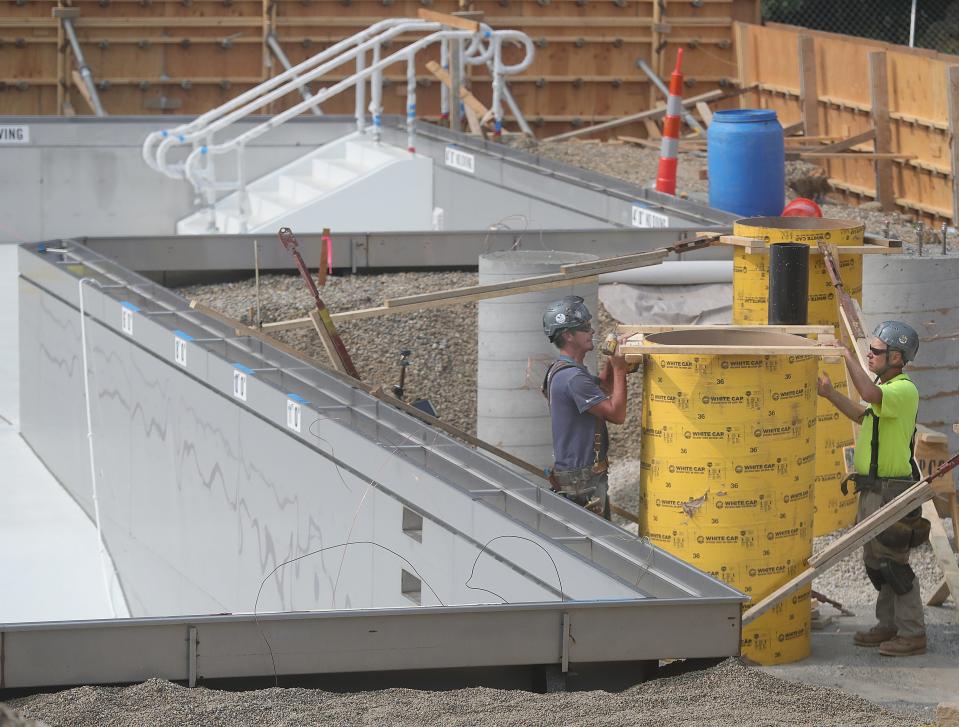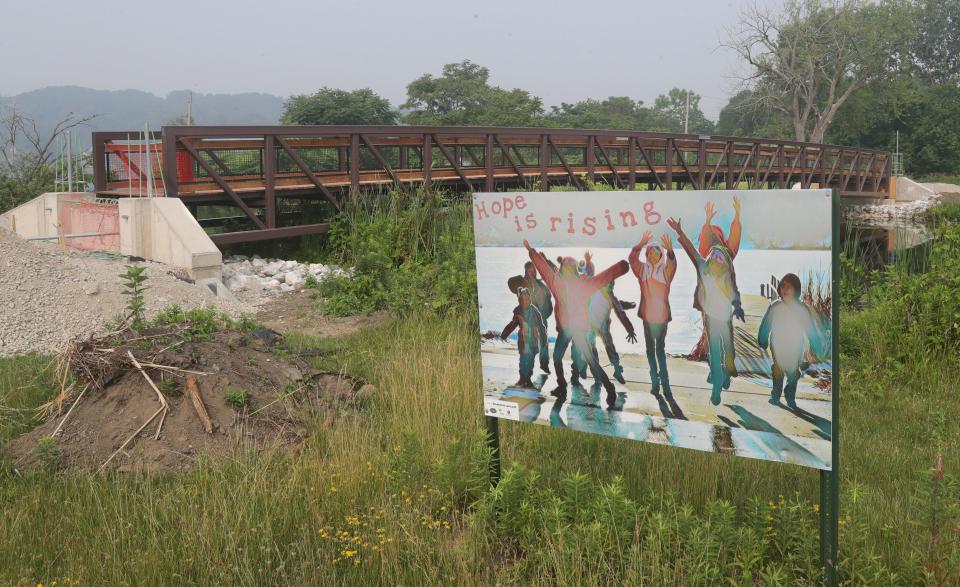How Akron is now spending $145 million federal stimulus funds

Akron administrators and a consultant helping them comply with federal rules updated City Council last week on the latest projects funded with the city's $145 million allocation from the American Rescue Plan Act.
The presentation recapped nearly two dozen active projects and gave perspective on where Akron stands compared to its peer cities on getting all the money under contract by the end of 2024 and spent by the end of 2026.
Before Joe Biden was elected president, Akron Mayor Dan Horrigan lobbied Congress and the federal government on a stimulus package that gave local officials more spending flexibility. After Biden signed ARPA, Horrigan was quicker than many Ohio mayors to tee up plans to spend his city's portion of the $1.9 trillion federal stimulus package.
Today, no other Midwestern city is reporting its spending with a real-time tracker online, said Mitch Lindstrom with Guidehouse, a national consulting firm that's working with Akron and other cities across the country.
And Akron is “in a healthy place” in terms of its pace of spending, Lindstrom said. Guidehouse research shows that Akron has spent 31% of its total ARPA funding, compared to 66% in Cleveland, 45% in Cincinnati, 37% in Columbus, 26% in Toledo, 19% in Dayton and just 2% in Youngstown.
Akron has committed all $145 million and spent only $44.6 million so far. Another $67.4 million is “currently tied to an active contract," leaving the city with about 18 months to enter contracts or award grants to spend the remaining $33 million.

After slow start, Akron is spending fast
Despite quickly announcing plans, Akron started off spending slowly.
Only $5.3 million was spent in the first year, from end of 2021 to end of 2022. Cities aren't accustomed to being efficient passthroughs for federal funds designed to flow directly to residents or community organizations, so it's taken time to establish that infrastructure, Lindstrom said, even as the federal government has confounded the process by amending its rules.
But Akron has caught up in the spending race with big projects and expenditures, from multimillion-dollar investments into a private-public partnership remaking Summit Lake and Lock 3, to hiring contractors who are renovating community centers and outdoor pools.
"We are starting to spend these dollars at a higher rate," Finance Director Steve Fricker told Akron Council on Monday during a PowerPoint presentation.
6-26-23 ARPA Update to Akron City Council by dhlivingston on Scribd
Akron has spent 7.5 times more in the last three quarters than it did in the first year.
ARPA spending picks up with personnel and operational expenditures
Spending really took off when Akron started using the federal funds on its employees.
Akron isn't alone in using the lion's share of early spending on its employees, Lindstrom illustrated with data from other Ohio cities. For example, he said, about 96% of spending in Cleveland, which has spent nearly twice as fast as Akron, has gone to personnel costs or "revenue replacement," which is a budgeting term for using federal funds to cover operational expenses that would otherwise deplete the largely income tax-fed general fund.
About $15.5 million in the last quarter of 2022, or three times what Akron had spent up until then, went toward bonuses for unionized employees and overtime in the police and fire departments.
Akron Deputy Finance Director Mike Wheeler said the city “is still looking into” how to pay for swollen police and fire overtime budgets once the federal funds are all used up.
Overtime in the police department is about where it was last year, with the fire department reducing its overtime by “a little bit,” Fricker said. But overtime for the fire department is expected to swell again starting in August when the city’s paramedics assume all hospital runs from AMR, a private ambulance company that’s closing its Akron operation.
“We’re still trying to figure that out as we go,” said Wheeler. “So, we are actively looking at it. I don’t have any details to share at this point. But it is a concern that we want everyone to be aware of.”

Every ARPA-funded project currently underway in Akron
Akron's online ARPA spending tracker at www.akronohiorescue.gov updates at 3 a.m. each day. Whatever was spent the day before is reflected on the interactive dashboard by the time the coffee is ready the next day.
And the chart now reflects “an exponential curve of spending," according to the presentation Monday.
Here’s a summary of all the active projects:
83% of a $2 million investment has been spent through Akron Cares to help 5,298 struggling municipal customers with utility bills.
$50,000 has funded the first of a three-year contract with community engagement software company Zencity, which gathers and analyzes public input.
The $189,100 redesign of the city’s website should be done by September. The new website will be searchable, more intuitive and translate into dozens of languages.
About 14% of $413,800 for HVAC upgrades have been spent on community centers.
$1 million is going toward Phase 1 of the Rubber City Heritage Trail, converting 4,680 feet of unused railroads near East End in Goodyear Heights into paved multiuse trails.
A $160,400 walking path at Joy Park will be completed by the end of 2023.
Community Development Corp. (CDC) support in the form of three separate $250,000 grants for The Well CDC to rehab commercial space at 911 E. Market St., Better Kenmore (formerly the Kenmore Neighborhood Alliance) to rehab two vacant commercial properties, and North Hill CDC to rehab and activate of the Howard St. Heritage Courtyard, plus $74,400 to Habitat for Humanity to plan the development of Boss Park and Abbot Court Arts District.
$3.5 million for affordable housing: $2.5 million to The Well CDC to buy and rehab 85 homes; $400,000 to East Akron Neighborhood Development Corp. to renovate 124 low-income, single-family homes; and $600,000 to the North Hill CDC to rehab mixed-use property to create five affordable housing units.
$425,000 of a $675,000 city commitment has been spent on House 330, where I Promise School families are expected to move into new apartments in the next two months.
Of the 1,600 applicants, the Akron Home Repair program has completed 43 home repairs, assessed 200 more and is currently working on 70 home repair projects. The city attributes delays to labor and supply issues.
All applicants for restaurants seeking $2,500 grants have been processed in the Akron Safe Pledge Program, and 63% of program funding is still available.
City Council’s Ring Doorbell $50,000 pilot program will award 460 cameras in Wards 3, 4 and 5 on a first-come, first-served basis starting in August. To apply, go to www.akroncitycouncil.org/news/ring-doorbell
Following a $7.4 million reconstruction, a new Perkins Pool and Bathhouse is scheduled to open mid-July.
The $12 million reconstruction of the Ed Davis Community Center is underway and expected to be done in May 2023.
A bridge now spans the lake as part of a $5 million contribution to the Ohio & Erie Canalway Coalition's renovation of Summit Lake, where projects on the north shore will be bid in July and completed by fall of 2024.
Renovations at Lock 3 downtown are underway and will continue into 2024 with a $6.7 million city allocation.
About $13.3 million of $30 million has been spent so far on general fund expenses, mainly to cover police and fire overtime. The same amount, for the same major reason, is expected to be spent again this year as this earmark for "budget stabilization" will be mostly exhausted a year ahead of schedule.
About $1.5 million of a $5.3 million administrative support budget has been spent, mostly on Guidehouse or Vorys, a consultancy and a local law firm that have helped the city navigate state and federal compliance.
With only the white-collar workers of the Civil Service Personnel Association expecting $1,000 bonus checks next year, the city has spent almost all of its budgeted $6.4 million in bonuses for unionized employees.
About $5 million of $7 million for violence prevention and intervention has been spent, with grants going to 41 grantees. Half the spending has gone to 10 organizations: Alchemy Inc. ($526,000); Project Grad Akron ($338,000); Pastoral Counseling Services of Summit County Inc. ($332,000); Victim Assistance ($250,000); and $200,000 each to the Battered Women's Shelter, Citizens Akron Church, Dreams Academy, Guys and Gals Community Partnership Inc. and The Fallen Fathers Foundation.
$200,000 of a $1 million grant has been awarded to AxessPointe to expand its health care center at 533 W. Market St.
About $500,000 of a $3 million allocation has been spent to replace 110 of the remaining 3,200 lead service water lines. The goal is to replace 1,100 lines this year, leaving less than 2,000 to replace by June 2024.
About a quarter of a $10 million budget is beginning to replace nearly 35,000 feet of failing water mains.
Reach reporter Doug Livingston at dlivingston@thebeaconjournal.com or 330-996-3792.
This article originally appeared on Akron Beacon Journal: How Akron plans to spend federal stimulus from American Rescue Plan

